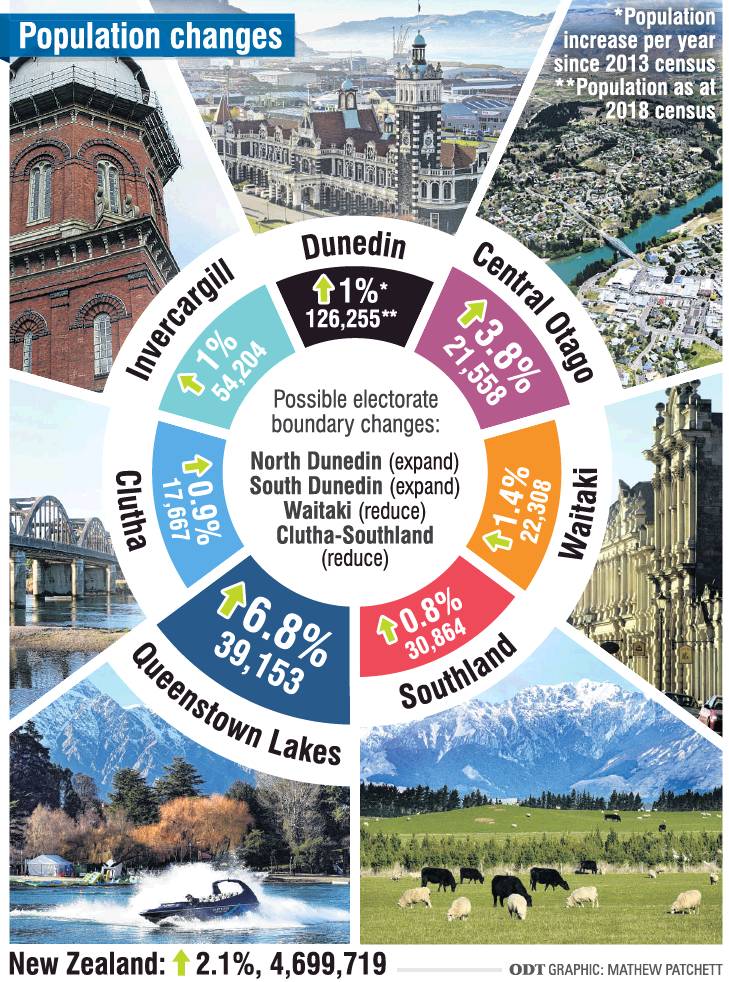Changes will likely mean Dunedin North and Dunedin South will include more rural areas, tingeing their traditional red colours with more blue.
Both have fallen below the 5% variance for the quota set for South Island electorates, 65,458 people.
By contrast Clutha-Southland and Waitaki have electoral populations exceeding the allowable 5%, and are expected to be made smaller by the Representation Commission, which sets and reviews boundaries.
Brian Roper, of the University of Otago politics department, said incorporating more of Dunedin's hinterland could have a "significant impact" on support for candidates and parties in the two electorates.
Dunedin North had one of the highest levels of voter support in the country for Labour, the Greens and other left-leaning parties.
"If the boundary gets redrawn to bring in to draw in a substantial number of socially and politically conservative rural voters, it will change that - depending on what sorts of numbers one is talking about."

While Federated Farmers was sometimes called "the National Party in gumboots", Labour still drew disproportionately on the support of working class voters, urban voters, Maori and Pasifika voters, Associate Prof Roper said.
Dunedin North, which stretches north past Herbert, has had a string of Labour MPs since the late 1920s - broken briefly by National MP Richard Walls, who held the seat for three years in 1975.
Dunedin South, which reaches down to the Waipori River, has been exclusively Labour since the 1930s, current MP Clare Curran holding the seat since 2008.
Other South Island electorates under quota by more than 5% were Invercargill, Ilam and West Coast-Tasman.
He was expecting to see no real difference to National Party stronghold Clutha-Southland, or to Invercargill, if their boundaries were adjusted.
Based on census data, the North Island will get a new electorate for next year's election.
The census results showed Queenstown-Lakes was the fastest-growing region in the South Island, growing by 6.8% between 2013 and 2018.
District Mayor Jim Boult said the population growth put pressure on infrastructure.
"The reality is it is a really attractive part of the world to live in, and that does put pressure on council."
After two years' consultation with the Government, the council was expecting a visitor levy to be put in Bill form in 2020. If it became reality the levy would go someway to improving infrastructure in the town to cope with the booming population.
The entire city of Dunedin grew by an average of 1% per year every year between 2013 and 2018, while Central Otago grew by an average of 3.8%, Waitaki 1.4%, Clutha 0.9%, Southland 0.8%, Gore 0.6% and Invercargill 1%.
Dunedin Mayor Dave Cull said he did not want to speculate on electoral boundaries, but was pleased to see the 5% growth in Dunedin as a whole - and 5000 more jobs in the city.












